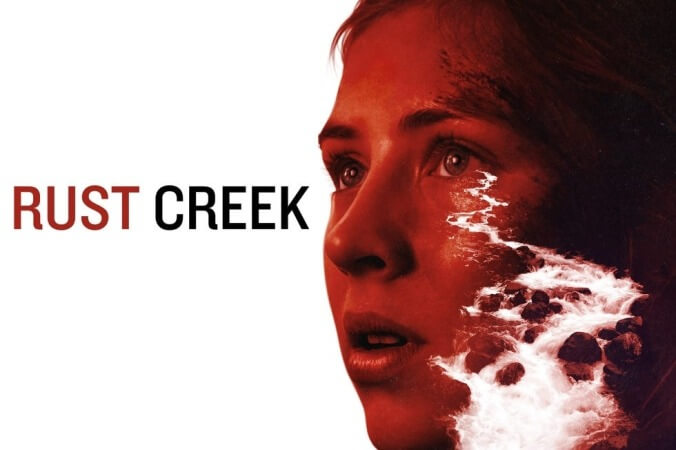Rust Creek is a slow-burn survival thriller that defies expectations

Rust Creek starts off like any number of films about a beautiful young woman menaced by rednecks in the isolated backwoods of some godforsaken hellhole (Kentucky, in this case): Sawyer (Hermione Corfield) is a bright, ambitious college student who, at the beginning of the film, sets out on a road trip to Washington, DC, where she’ll interview for her dream job. One wrong turn and a malfunctioning GPS later, and she’s utterly lost. Enter local yokels Hollister (Micah Hauptman) and Buck (Daniel R. Hill), whose leering offers of a place to stay for the night are laden with unspoken danger.
Then Sawyer does something unexpected: She fights back, grabbing the brandished knife from Hollister’s hand and stabbing him and Buck before limping off into the woods, trailing blood from a stab wound on her leg. Dazed and unfamiliar with the terrain, she falls down a ridge and injures herself again, and once again we brace for the worst. But the worst doesn’t happen. There are no sadistic reprisals—just Sawyer, alone in the woods, limping around on her one good leg. Then she wakes up with rope around her wrists in a trailer occupied by squirrely meth cook Lowell (Jay Paulson), and, once again, we brace for the worst. But that doesn’t happen, either.
The situation Sawyer has unwittingly stumbled into is much more complicated than a simple I Spit On Your Grave scenario, leading to a slow-burn character-driven drama as Sawyer, forced to hide out with Lowell in his isolated drug lab, gets to know the thoughtful amateur chemist, and him to know her. (Don’t worry; it doesn’t turn into a love story, either.) The complexity of that situation means that Sawyer is notably absent from much of the second half of Rust Creek, which instead spends significant time at the local sheriff’s office with earnest Deputy Katz (Jeremy Glazer) and corrupt Sheriff O’Doyle (Sean O’Bryan).
But while Rust Creek’s persistent defiance of stereotypes—about women, about Appalachia, about the drug trade and the people in it—is admirable, this pivot into institutional intrigue and dialogue-driven character building brings the already sluggish pace of the film to a stupefying near halt. Similarly frustrating is the inertia that seizes the character of Sawyer once she reaches Lowell’s trailer; although she’s still smart and tough, the agency seems to drain from her body with every subsequent scene until she’s listless and passive, waiting for the other characters to tell her what to do. Screenwriter Julie Lipson’s well-written, naturalistic dialogue helps pass the time, as does Michelle Lawler’s lovely scenic cinematography. But although what we get instead stands on its own merits, this survival thriller could have used a few more thrills.